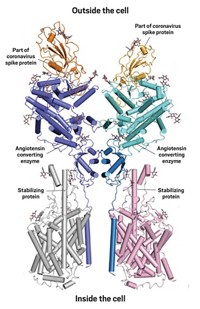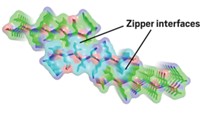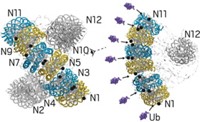Advertisement
Grab your lab coat. Let's get started
Welcome!
Welcome!
Create an account below to get 6 C&EN articles per month, receive newsletters and more - all free.
It seems this is your first time logging in online. Please enter the following information to continue.
As an ACS member you automatically get access to this site. All we need is few more details to create your reading experience.
Not you? Sign in with a different account.
Not you? Sign in with a different account.
ERROR 1
ERROR 1
ERROR 2
ERROR 2
ERROR 2
ERROR 2
ERROR 2
Password and Confirm password must match.
If you have an ACS member number, please enter it here so we can link this account to your membership. (optional)
ERROR 2
ACS values your privacy. By submitting your information, you are gaining access to C&EN and subscribing to our weekly newsletter. We use the information you provide to make your reading experience better, and we will never sell your data to third party members.
Biological Chemistry
Linking Alzheimer’s And Cholesterol
Amyloid precursor protein, a molecule involved in neurodegenerative disease, binds cholesterol in cell membranes
by Lauren K. Wolf
June 4, 2012
| A version of this story appeared in
Volume 90, Issue 23
Using NMR and other spectroscopy techniques, researchers at Vanderbilt University School of Medicine have found that amyloid precursor protein (APP)—the macromolecule that fragments and then clumps together in the brains of patients with Alzheimer’s disease—binds cholesterol (Science, DOI: 10.1126/science.1219988). Scientists have long suspected a link between elevated cholesterol levels and Alzheimer’s, says Charles R. Sanders, the Vanderbilt team’s leader, but how cholesterol promotes the neurodegenerative disease has been “murky.” Now, Sanders and his group have provided a new clue by determining the structure of C99, a cell-membrane-spanning segment of APP, and by mapping the site where it binds to cholesterol. The researchers found that C99 contains a curved, yet flexible, helical portion that spans the cell membrane and binds cholesterol with the help of a GXXXG sequence (where G is glycine, and X is any amino acid). They hypothesize that when C99 (or APP) binds cholesterol, the molecule moves the protein into cholesterol-rich areas, called lipid rafts, on the cell surface. The enzyme γ-secretase, which hangs out in these regions, then cleaves C99, forming the smaller amyloid-β fragments that characterize Alzheimer’s.





Join the conversation
Contact the reporter
Submit a Letter to the Editor for publication
Engage with us on Twitter